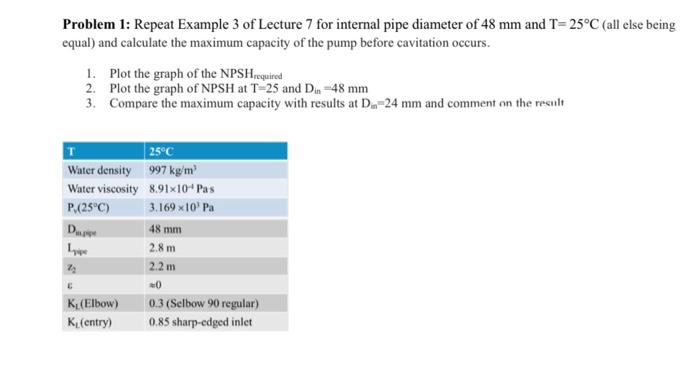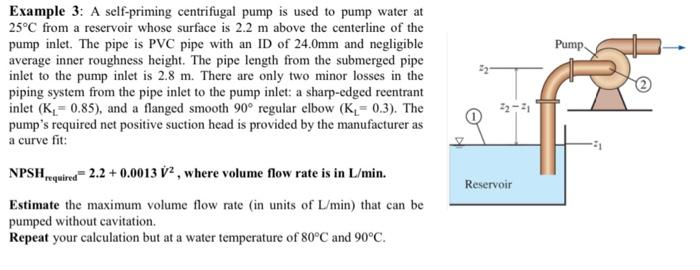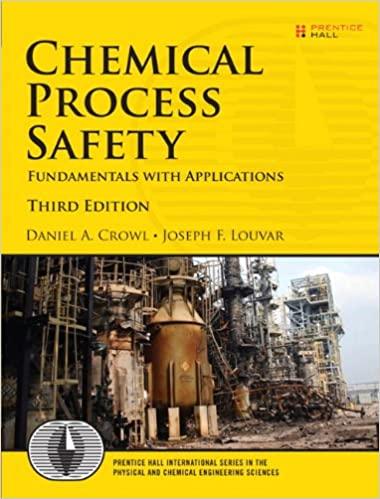Answered step by step
Verified Expert Solution
Question
1 Approved Answer
plz show the excel of the solving Problem 1: Repeat Example 3 of Lecture 7 for internal pipe diameter of 48mm and T=25C (all else
plz show the excel of the solving 

Problem 1: Repeat Example 3 of Lecture 7 for internal pipe diameter of 48mm and T=25C (all else being equal) and calculate the maximum capacity of the pump before cavitation occurs. 1. Plot the graph of the NPSHrequired 2. Plot the graph of NPSH at T=25 and Din=48mm 3. Compare the maximum capacity with results at Dm=24mm and comment on the result Example 3: A self-priming centrifugal pump is used to pump water at 25C from a reservoir whose surface is 2.2m above the centerline of the pump inlet. The pipe is PVC pipe with an ID of 24.0mm and negligible average inner roughness height. The pipe length from the submerged pipe inlet to the pump inlet is 2.8m. There are only two minor losses in the piping system from the pipe inlet to the pump inlet: a sharp-edged reentrant inlet (KL=0.85), and a flanged smooth 90 regular elbow (KL=0.3). The pump's required net positive suction head is provided by the manufacturer as a curve fit: NPSHrqquired=2.2+0.0013V2, where volume flow rate is in L/min. Estimate the maximum volume flow rate (in units of L/min ) that can be pumped without cavitation. Repeat your calculation but at a water temperature of 80C and 90C 

Step by Step Solution
There are 3 Steps involved in it
Step: 1

Get Instant Access to Expert-Tailored Solutions
See step-by-step solutions with expert insights and AI powered tools for academic success
Step: 2

Step: 3

Ace Your Homework with AI
Get the answers you need in no time with our AI-driven, step-by-step assistance
Get Started


